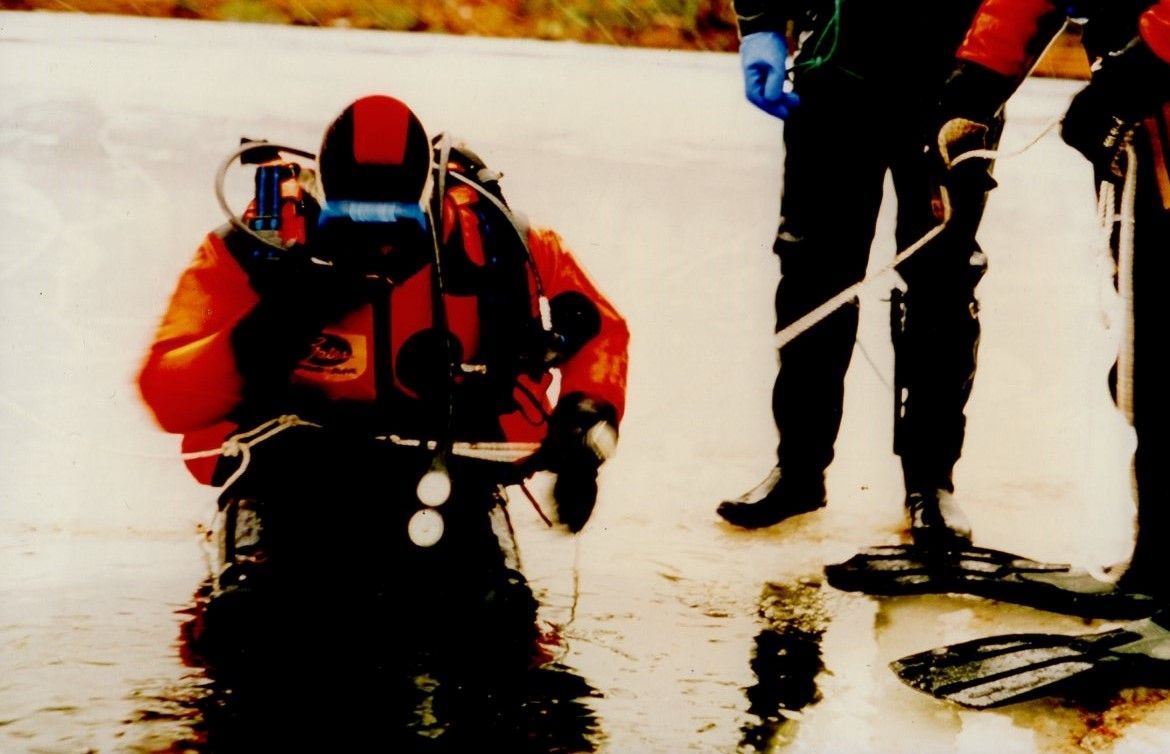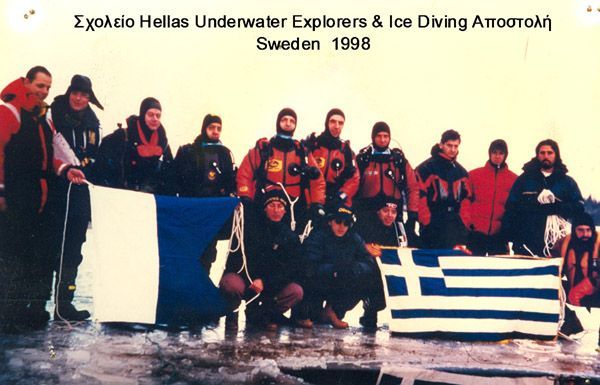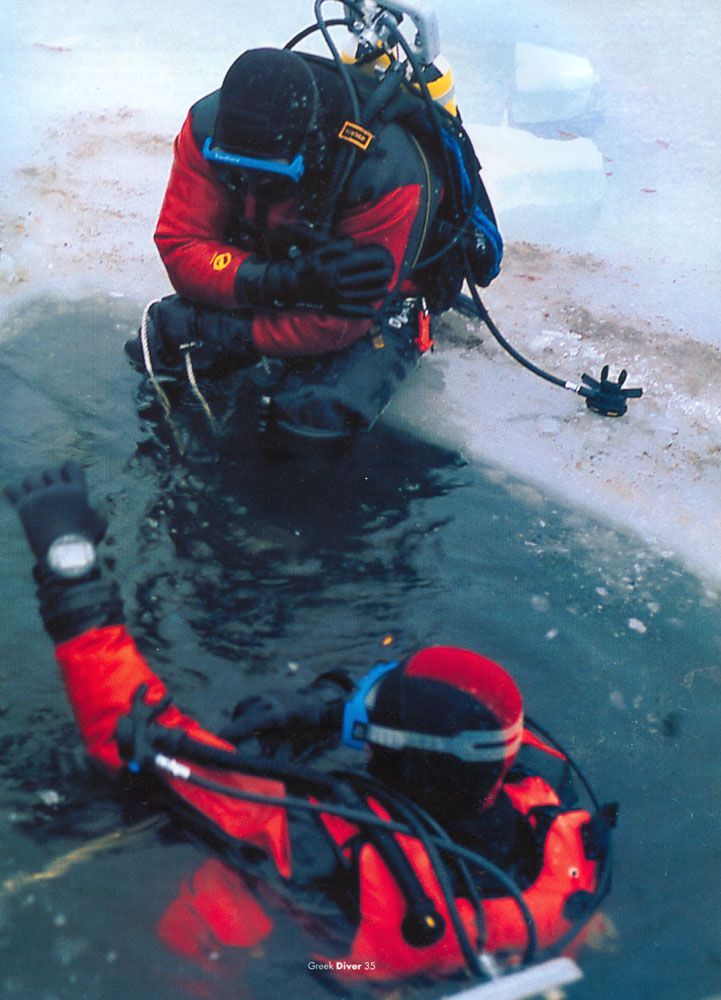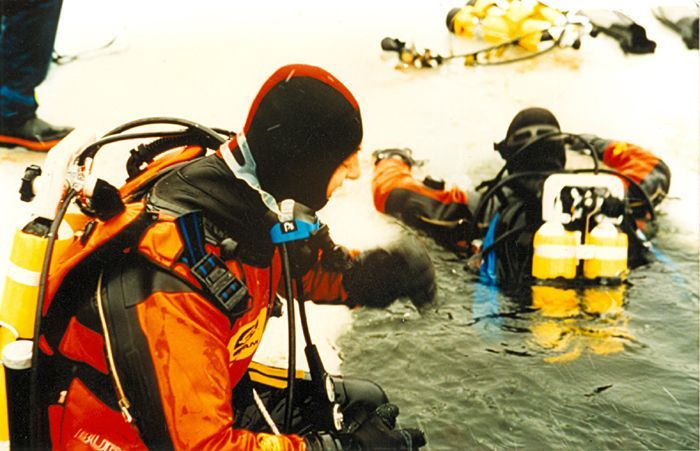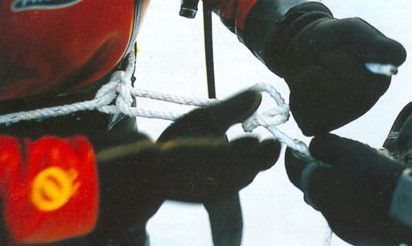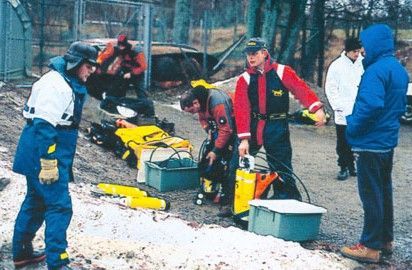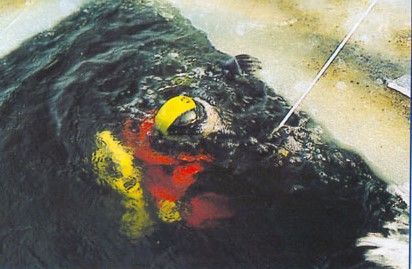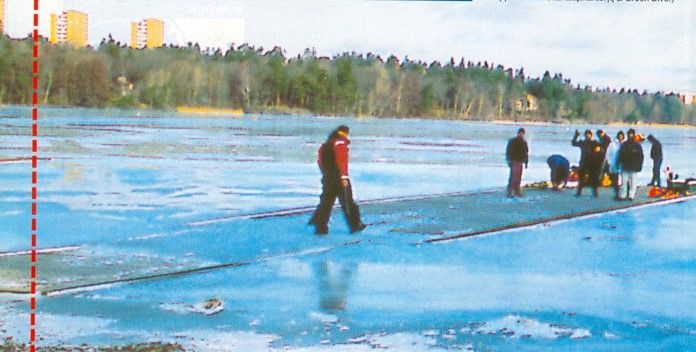Hellas Underwater Explorers - SWEDEN 1998
The heading translates to:
"1st Diving Expedition in the Ice in Sweden."
Columnist: George Petrou
One of the most historic moments of Greek diving.
The 1st Ice Diving Expedition, in a lake, in Sweden, organized and carried out by Hellas Underwater Explorers / George Petrou in February 1998, marked the beginning of a new era for technical diving, greatly influencing our diving experience.
At a time when technical diving was in its early stages, such a mission seemed absurd and extreme in the eyes of many. Organizing it made us even more passionate. Clearly a special form of diving that was very far from our place and the conditions we were used to. Ice diving or Ice diving in English is a roof dive in a closed, confined space with very special environmental conditions.
The ice is a key element. A semi-transparent, thick ceiling above us, a frozen sky, which you can only dive into and emerge from at specific points. The process is that you break the ice and create a large, relatively triangular hole (one or more) and continue to make sure that the water in the opening does not freeze. Having a rope that follows you tied to the surface or with someone holding it is a basic safety measure both to avoid losing the return exit and for communication. And if you are wondering why the hole has to be triangular, it is because the corners help us to support ourselves and get out with the help of two pieces of wood with a nail (see photos below).
Freezing water. Temperatures close to 0 require the use of a dry suit with very good isotherm. Dry suits made of neoprene are preferred. We can use Argon for heating gas or have an internal vest with battery heating. It is not necessary to have excellent maintenance of our suit in terms of aquastop etc. Rebreathers are ideal for these conditions due to "warm breathing".
Fresh water
Buoyancy in fresh water changes because the buoyancy of salt water in the sea element (lack of salt) is not there. Less density equals less buoyancy. So our weights vary.
Decompression - Denitrification
The charge of Nitrogen, how much Nitrogen dissolves within our tissues (Laws Henry - Boyle, Dalton, Charles etc.) determines how much decompression, depths of stops and times we must do during the ascent in order to achieve proper and sufficient denitrification. We must be sure that our dive computers are set for freshwater diving. The water pressure is lower than that of seawater.
Altitude
It is very common for lakes to be at an altitude where the atmospheric pressure is lower, i.e. different pressure, so our dive computer should take that into account. Of course there are special tables for altitude dives. And the water is fresh.
Lake - Muddy bottom
A factor that poses risks is the muddy bottom that distinguishes the environment of the lakes. It is like powder, which with the slightest clumsy movement, paddling can create a dense and impenetrable sediment. A wall around us that completely disorients the divers, creates problems in both buoyancy and psychology. In this dangerous and stressful situation, calmness, a clear mind, training, experience, methodicality are required and of course the usefulness of the rope that leads back to the entrance opening is proven. Our lighting must be with a very narrow beam to penetrate the dense sediment (which will take a long time to settle) and of course there is no talk of insufficient gas reserves. The couple should not get lost in each other at any time and the rope method with which they are tied to each other in this case proves to be life-saving. Excellent buoyancy is required.
We could say countless things, but these are the subject of a properly organized ice diving school.
Arrival in Sweden
We arrive in Stockholm and after a visit to the legendary ship - museum Vasa we visit the facilities of the company that manufactures professional pressure regulators Divex. We meet the owner and designer Mr. Lars Lungqvist who helped us a lot both in logistical support and our contacts for the organization of the Ice diving school. The quality of construction is evident and their performance in such extreme conditions is amazing. It was one of the reasons that I then took over the representation of DIVEX pressure regulators for Greece and Cyprus and I really never regretted it
Theory
Our group gathered at the school and we did theory which, due to its diversity, was very interesting. New situations and techniques.
Στη λίμνη
The lake was large and frozen. A thick layer of ice was our terrain and it was impressive that not only were we all walking on it but also a truck carrying our equipment. In many places in the ice, objects or animals or leaves were trapped and you could see them.
Holes
We started to hit with axes, a very laborious process since the thick ice was a tough nut to crack. We opened the triangular hole well and made sure that the water in it did not freeze again. One diver from the pair that would dive had the rope that served our return and was a means of communication. The pairs between them had a rope with a large rubber O-ring on the ends that they passed around their wrists so that they would not get lost among themselves. We made a final reminder of the diving procedures, communication, checked our equipment and got lost under the thick layer of ice.
Dive
The dive was absolute magic. This frozen sky above us that made the daylight look like a light sunset and the mysterious frozen environment was something unique. Below us the mud of the lake that blackened everything. There was a resounding silence that made us talk incessantly with meanings about this incredible alien, then for us, place. Buoyancy really required a lot of attention and the fact that our breath contains ice nuggets from the liquefied air was impressive. The existence of the rope with the surface and between us proved to be life-saving since in this environment it is very difficult to find the exact point of return.
Emergence
The rope led us to the hole and even though we were inside for a long time, we felt like very little time had passed and we wanted more.
Εμπειρία
An incredibly amazing experience, everything we experienced this week, that we will never forget and that reminded us that our favorite hobby has a lot to offer us, as long as we dare to engage in all the special forms of technical diving, but with the necessary prerequisites of training and discipline.
We discovered that we had the ability to conquer new worlds far from the narrow perspective that we had been forced into by the swampy environment of our homeland where diving was allowed, for those who don't know, in only two places in our country!!!
Και έτσι ξεκίνησε ένα μαγικό ταξίδι εξερευνήσεων και ανακαλύψεων που γέννησε φιλίες και συνέβαλε στην αρχή πιστοποίησης μερικών από τους πλέον σημαντικούς εκπαιδευτές τεχνικής κατάδυσης.
Ice diving, or more correctly under ice, is clearly a special form of technical diving that requires training, knowledge, practical repetition, gradual acquisition of experience, equipment infrastructure, discipline, and a serious mindset.
It turned out, as expected, to be a very spectacular and demanding school.
I must thank Mr. Lars Ljungqvist (Divex Regulators) who contributed greatly to the successful realization of our school.
Photo: George Vandoros
